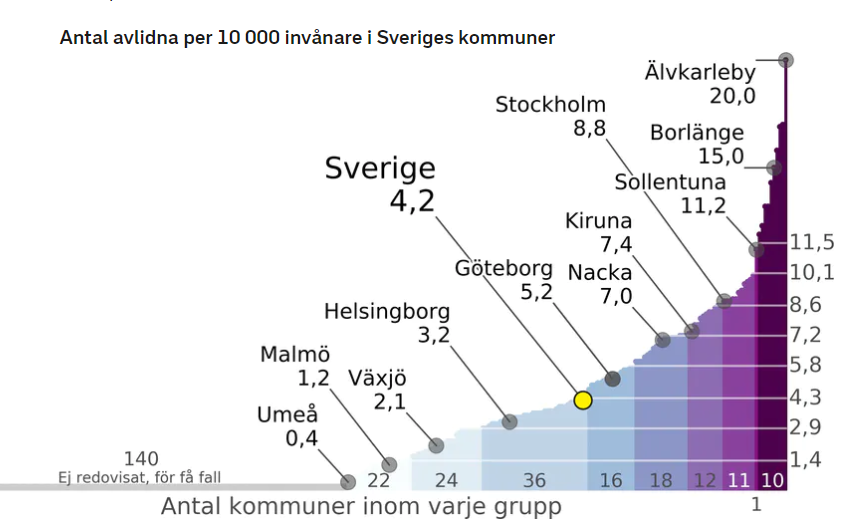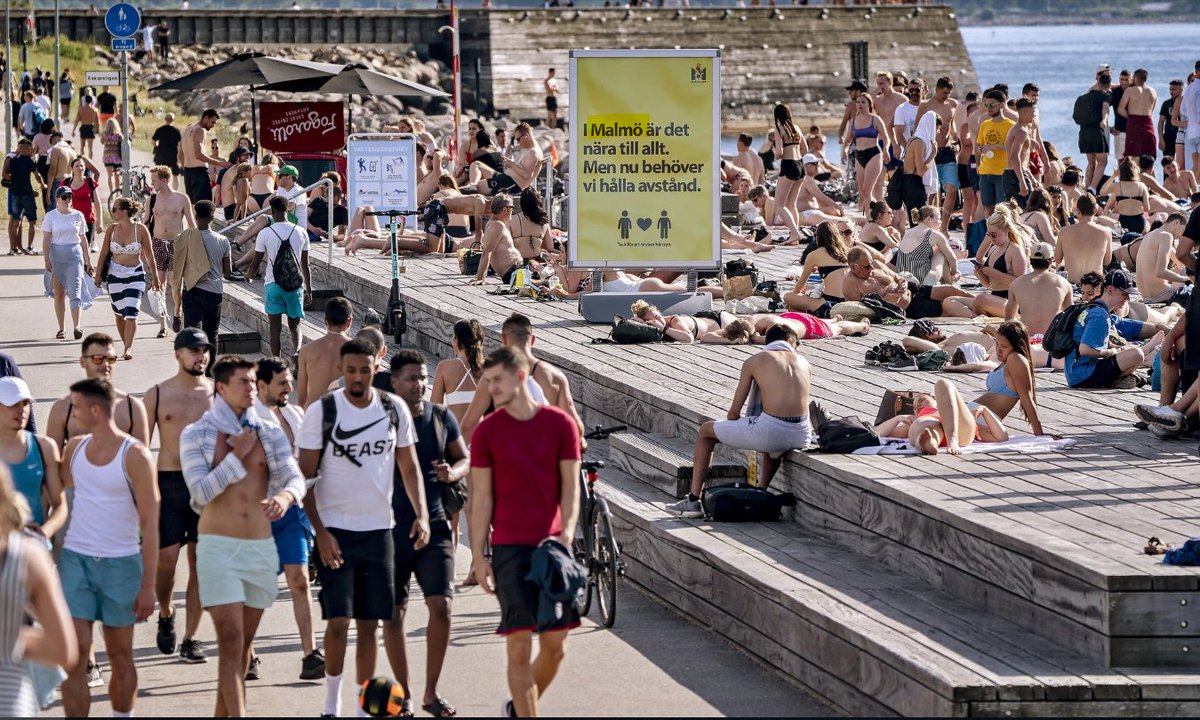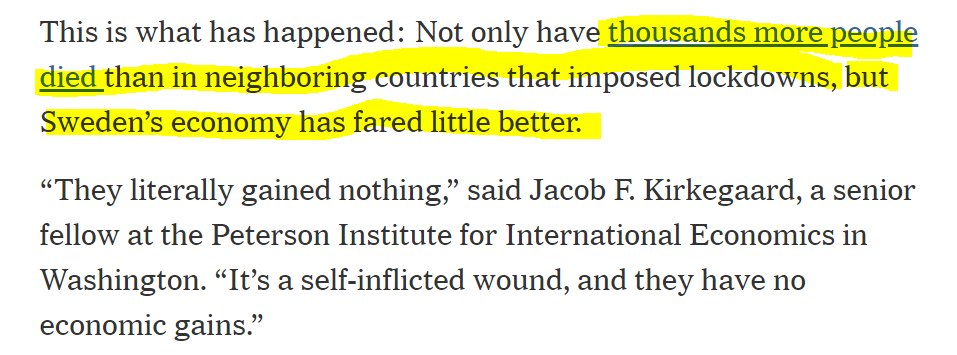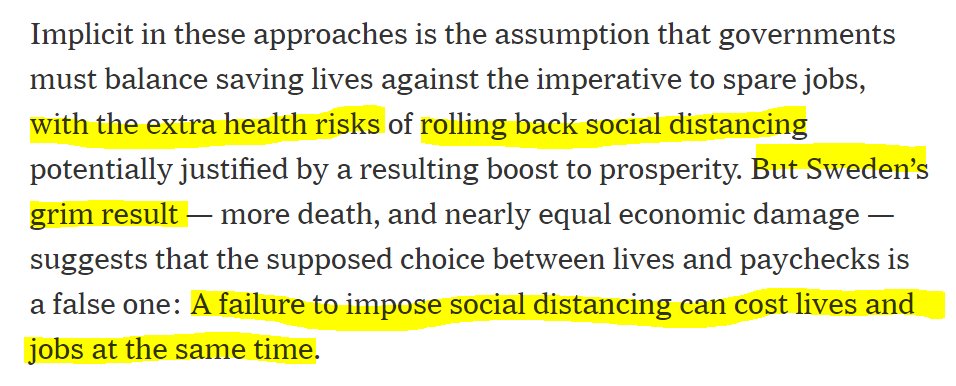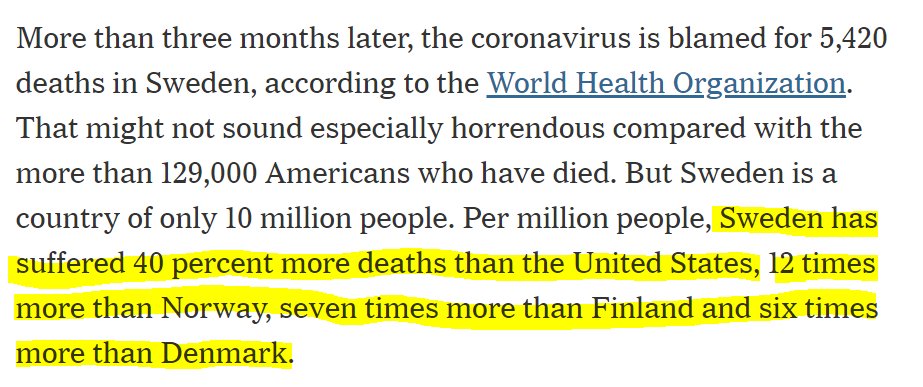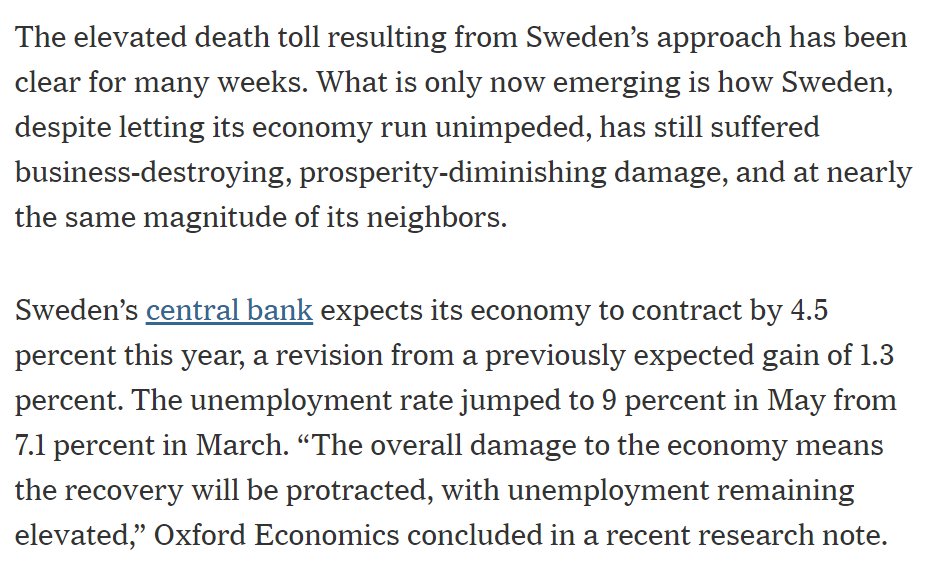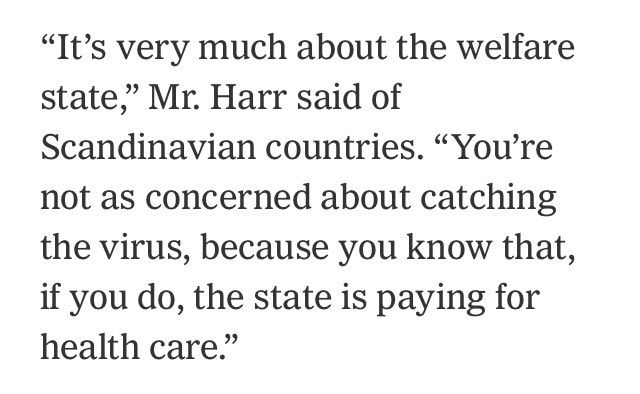Another American journalist writing on Sweden, proving he doesn& #39;t have a clue what he is writing about. An article full of prejudices, false comparisons and twisted facts. @nytimes @petersgoodman. https://www.nytimes.com/2020/07/07/business/sweden-economy-coronavirus.html?smtyp=cur&smid=tw-nytimes">https://www.nytimes.com/2020/07/0...
- Sweden did not "carry on"
- The relation between death toll and chosen strategy still has to be proven. It has already been made clear that the way of organizing elderly care was crucial for the death toll, rather than the strategy. Lockdown countries faced the same issue.
- The relation between death toll and chosen strategy still has to be proven. It has already been made clear that the way of organizing elderly care was crucial for the death toll, rather than the strategy. Lockdown countries faced the same issue.
- Sweden stated early on that they would put in place an evidence based policy. Keeping schools open, has been proven crucial and spot on, in contrary to countries where scientists were overruled by politicians and schools were forced to close
- Life did not carry on "unhindered"
- Life did not carry on "unhindered"
We forgot the cover picture! This one is taken in Malmö, in region Skåne. One of the regions that has shown very low impact of Covid-19. An indication of the large geographical differences in Sweden, despite application of the same strategy.
- Comparisons with neighboring countries do not add up. Different travel habits, different culture, differences in healthcare and elderly care, etc etc...
- Too early to make an economic balance.
- Too early to make comparisons at all.
- Too early to make an economic balance.
- Too early to make comparisons at all.
On to next paragraph:
- Sweden did not roll back social distancing. In contrary it chose a strategy of social distancing that can be sustained much longer than imposed lockdowns. Mobility data has shown the clear effects of the measures on travelling of Swedes.
- Sweden did not roll back social distancing. In contrary it chose a strategy of social distancing that can be sustained much longer than imposed lockdowns. Mobility data has shown the clear effects of the measures on travelling of Swedes.
Mobility data also shows that neighboring countries became much more mobile right after their lockdowns than Sweden, proving the sustainability of Sweden& #39;s approach.
Also: How can you mention extra health risks and talk about a "grim result" as secondary health impacts and economic consequences are not clear at all. All cancelled/delayed healtcare (also in Sweden), mental impact on children etc. will need to be seen over months even years...
Next:
- Restaurants, shops etc remained open with very clear guidelines for social distancing and reduced capacity. Forgot to mention that?
- Restaurants, shops etc remained open with very clear guidelines for social distancing and reduced capacity. Forgot to mention that?
Next:
- Comparing countries is ridiculous, but comparing Sweden with USA is even more. These countries are in a different phase of the pandemic, with USA being hit much later, while Sweden had downward trend in IC intake and deaths per day since beginning/half April.
- Comparing countries is ridiculous, but comparing Sweden with USA is even more. These countries are in a different phase of the pandemic, with USA being hit much later, while Sweden had downward trend in IC intake and deaths per day since beginning/half April.
Saving the economy was never the goal...
Saving healthcare was. Sweden succeeded in flattening the curve with remaining IC-capacity on national level. Flattening the curve also means, lower rise, lower peak, but also slower descend.
Saving healthcare was. Sweden succeeded in flattening the curve with remaining IC-capacity on national level. Flattening the curve also means, lower rise, lower peak, but also slower descend.
Comparing Sweden now to other countries that had much higher peaks does not make sense without considering the bigger picture. (if it does at all, quod non)
Another goal was to protect risk groups. This clearly failed when the virus entered certain elderly carehomes. However, once again, the situation is much more complex to link this to the Swedish strategy. Large regional differences occur.
This investigation was presented today and 70% of all Covid deaths in elderly homes occurred in only 40 of 290 towns. Clear shortcomings in the elderly care were detected. Elderlycare is a municipal responsibility. https://www.svt.se/nyheter/inrikes/ivo-har-granskat-landets-1-700-aldreboenden">https://www.svt.se/nyheter/i...
Once again. Linking this death toll solely to the Swedish strategy is proving that you haven& #39;t been digging into the problem as you are expected to do as a journalist.
Another proof of this is the fact that the author points out the government as responsible for most of this. In Sweden, the national health agency (Folkhälsomyndigheten), is setting out the strategy. Missed that as well?
Poor journalism. I expect more from the NYT
Insinuating that people aren’t afraid to catch the virus because of social security. Completely absurd. It’s thanks to social security that people can stay home when feeling sick. It’s exactly the lack of secure contracts that caused dramas in elderly carehomes.
Seems Peter already had made up his mind before awaiting facts... https://twitter.com/jaspervankuijk/status/1280815473232359424?s=21">https://twitter.com/jaspervan... https://twitter.com/jaspervankuijk/status/1280815473232359424">https://twitter.com/jaspervan...
For the record: Minister of foreign trade Anna Hallberg reacted to the article today and denies strongly the statement of @petersgoodman that Sweden would have prioritized the economy above health. https://www.svd.se/ekonom-ingen-vilja-att-andra-coronataktiken">https://www.svd.se/ekonom-in...

 Read on Twitter
Read on Twitter

